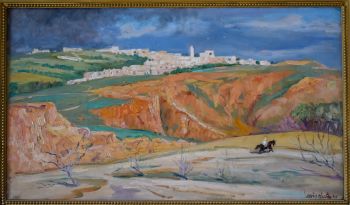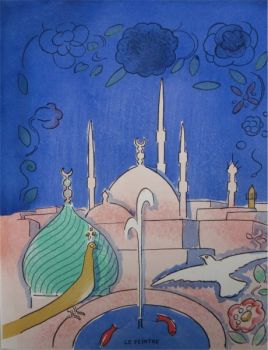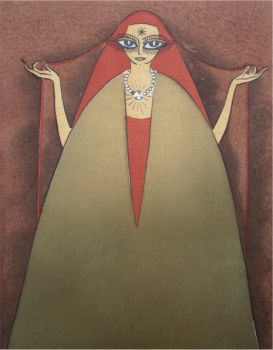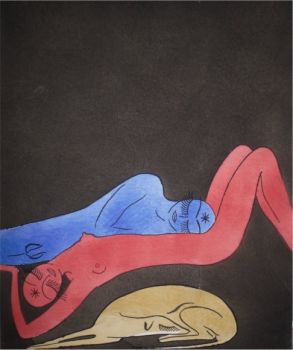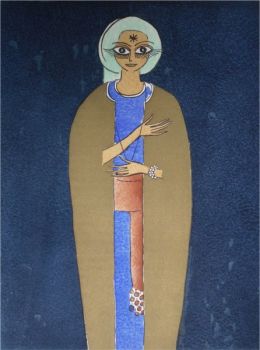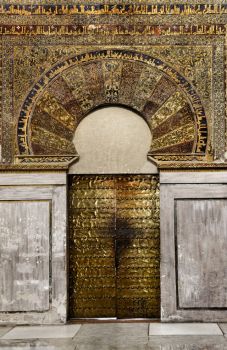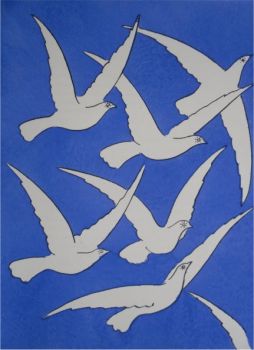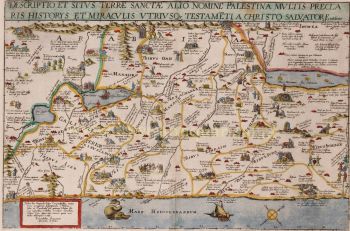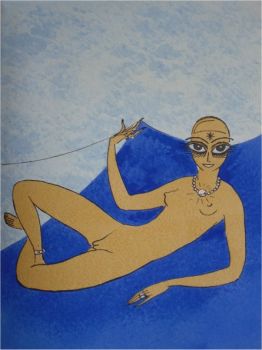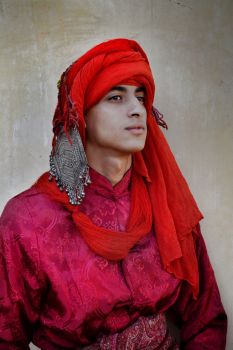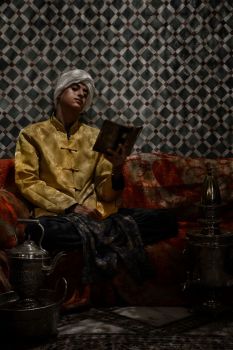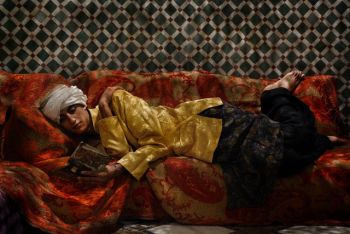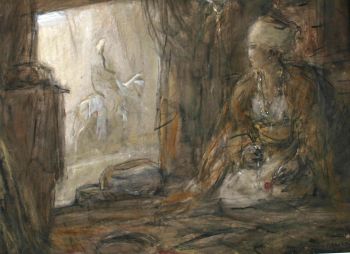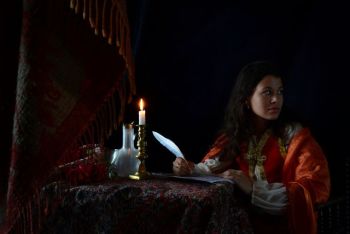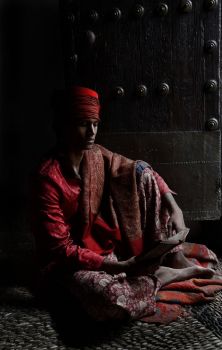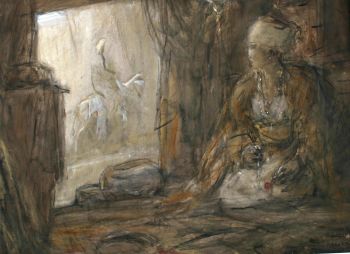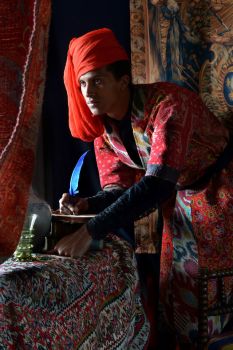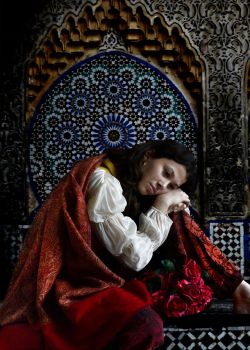Instructions for Carsten Niebuhr's expedition to Arabia 1774
Johann David Michaelis
Atualmente indisponível via Gallerease
- Sobre arteRecueil de questions, proposées à une société de savants, qui par ordre de Sa Majesté Danoise font le voyage de l'Arabie.
Amsterdam, S.J. Baalde; Utrecht, J. van Schoonhoven & comp., 1774. 4to. Set in roman type with incidental Greek, Hebrew, Arabic, Syriac and 1 word in Coptic. Near-contemporary tanned sheepskin, gold-tooled spine.
Hans Bernhard Merian's French translation of Michaelis's Fragen an eine Gesellschaft gelehrter Männer (1762), prepared during the early stages of Carsten Niebuhr's Danish expedition to the Middle East. It is the first edition in any language to be printed in the Netherlands. Johann David Michaelis, a famed German Orientalist and theologian, was one of the scholars who prompted the important Danish expedition to Egypt, Arabia and Syria (1761-1767), led by Carsten Niebuhr. Michaelis hoped to investigate the relationship of the southern Arabic dialects to Hebrew, and to verify obscure botanical and zoological information in the Bible. For this purpose he composed the present 100 "questions". It includes the instructions for the expedition by Frederick V of Denmark, a 35-page account of Yemen and an extract of Carsten Niebuhr's account of Arabia (not included in the first French edition of 1763).
Back of first free endleaf with traces of removed bookseller's(?) ticket. With an occasional small rust spot, but otherwise in very good condition and only slightly trimmed, leaving large margins. Binding with minor suface damage and wear at the hinges and extremities, but otherwise also very good. Important preparatory studies concerning Egypt, Arabia and Syria, written and first published during the early stages of a voyage.
Chadenat 1933; Gay, Bibl. de l'Afrique en de l'Arabie 3366; STCN (3 copies); Macro, Bibliography of the Arabian Peninsula 1593. - Sobre artistaJohann David Michaelis foi um famoso orientalista e teólogo alemão, foi um dos estudiosos que impulsionou a importante expedição dinamarquesa ao Egito, Arábia e Síria (1761-1767), liderada por Carsten Niebuhr. Michaelis esperava investigar a relação dos dialetos árabes do sul com o hebraico e verificar informações botânicas e zoológicas obscuras na Bíblia. Michaelis nasceu em Halle an der Saale e foi treinado para a vida acadêmica sob os olhos de seu pai. Em Halle, ele foi influenciado, especialmente na filosofia, por Siegmund J. Baumgarten (1706–1757), o elo entre o antigo pietismo e J. S. Semler, enquanto cultivava seu forte gosto pela história sob o chanceler Ludwig. Em 1739-1740 ele se qualificou como professor universitário. Uma de suas dissertações foi uma defesa da antiguidade e da autoridade divina dos pontos vocálicos em hebraico. Sua erudição ainda seguia as velhas linhas tradicionais, e ele também era muito exercido por certos escrúpulos religiosos, com alguns vendo um conflito entre sua mente independente e a de submissão à autoridade - encorajada pelo luteranismo no qual ele havia sido treinado - o que afetou seu raciocínio. Uma visita à Inglaterra em 1741-1742 o tirou do estreito sulco de sua educação anterior. Ao passar pela Holanda, conheceu Albert Schultens, cuja influência em suas visões filológicas se tornou poderosa alguns anos depois. Em Halle Michaelis sentiu-se deslocado e, em 1745, aceitou de bom grado um convite para Göttingen como Privatdozent. Em 1746 ele se tornou professor extraordinarius, em 1750 ordinarius, e em Göttingen ele permaneceu lá até sua morte em 1791.
Artwork details
Related artworks
Engelbert Kaempfer
LIVRO ENGELBERT KAEMPFER1651 - 1716
Preço em pedidoZebregs & Röell - Fine Art - Antiques
Tilmanus Nicolaus Maastricht
Missale Romanum com montagens de prata holandesa1788 - 1792
Preço em pedidoJacob J. Roosjen SRI
LAWRENCE WEINER
"SKIMMING THE WATER [MENAGE A QUATRE]" Signed book plus small artwork2010 - 2014
Preço em pedidoGallerease Selected
Engelbert Kaempfer
LIVRO ENGELBERT KAEMPFER1651 - 1716
Preço em pedidoZebregs & Röell - Fine Art - Antiques
Tilmanus Nicolaus Maastricht
Missale Romanum com montagens de prata holandesa1788 - 1792
Preço em pedidoJacob J. Roosjen SRI
1 - 4 / 22Artista Desconhecido
IMPORTANTE E RARA GRANDE PINTURA DE 'ESTILO DE EMPRESA' ÍNDIO EM MARFIM QUE REPRESENTA UM DESFILE1850 - 1900
Preço em pedidoZebregs & Röell - Fine Art - Antiques
 Com curadoria de
Com curadoria deDanny Bree
Elisabeth Treskow
Lápis-lazúli afegão incrustado com ouro em um suporte de prata1950 - 1960
Preço em pedidoJacob J. Roosjen SRI
1 - 4 / 24

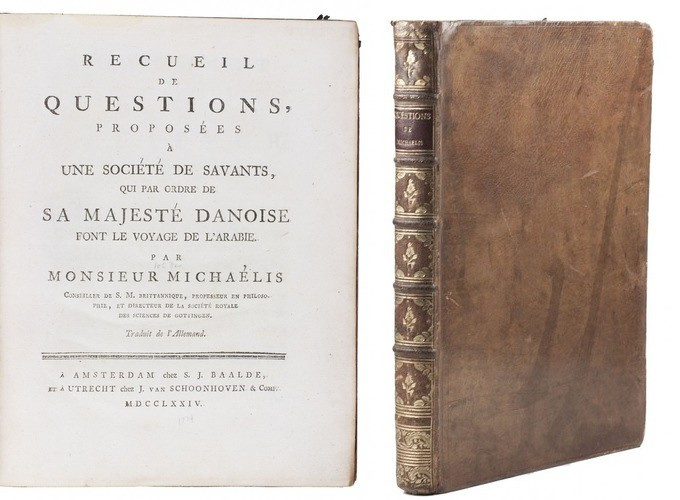









!["SKIMMING THE WATER [MENAGE A QUATRE]" Signed book plus small artwork by LAWRENCE WEINER](https://media-2.gallerease.com/images/442bfd5f-fc31-4e18-a2fa-ee0c08eade64/350x350/skimming-the-water-menage-a-quatre-signed-book-plus-small-artwork.jpg)












